The Gharial: A Critically Endangered Species
The gharial (Gavialis gangeticus), also known as the gavial or fish-eating crocodile, is a critically endangered crocodilian species endemic to the Indian subcontinent. Revered for its distinctive long, narrow snout and fish-eating habits, the gharial plays a crucial role in the health of riverine ecosystems. Once widely distributed across major rivers, the gharial’s range has drastically shrunk over the past century, primarily due to anthropogenic pressures.
Physical Characteristics and Habitat
The gharial (Gavialis gangeticus) is instantly recognizable by its most prominent feature – an elongated, narrow snout, which distinctly sets it apart from other crocodilian species. This specialized morphology is a testament to its piscivorous diet, allowing for efficient capture of fish in swift-flowing riverine environments. The gharial’s jaws are lined with numerous sharp, interlocking teeth perfectly adapted for grasping and holding onto slippery prey.
Exhibiting sexual dimorphism, male gharials are significantly larger than females, reaching lengths of up to 6 meters, while females typically measure between 2.6 to 4.5 meters. Mature males develop a distinctive bulbous growth, known as a “ghara,” on the tip of their snout. This protuberance serves a variety of functions, including enhancing vocalizations, serving as a visual display during courtship, and potentially aiding in bubble blowing, further attracting potential mates.
Gharials are highly adapted to aquatic life, possessing a streamlined body and a laterally compressed tail, providing powerful propulsion through water. Their webbed feet, while not used for swimming, aid in maneuverability in shallow waters and provide stability on land during basking or nesting.
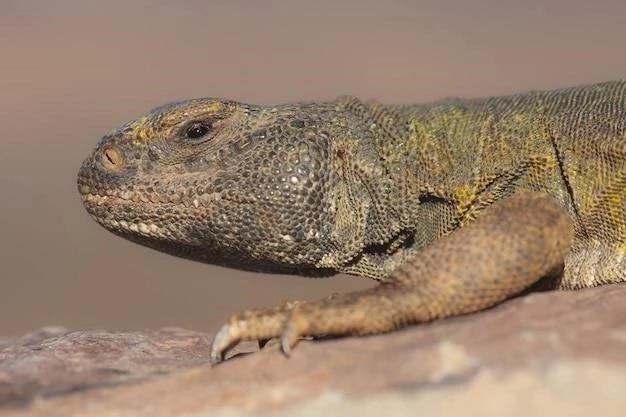
Preferring clear, fast-flowing rivers with deep pools and sandbanks, gharials demonstrate a specialized habitat preference. Sandbanks are essential for basking, regulating body temperature, and, critically, for nesting. Females excavate nests in the soft sand, laying clutches of 30-50 eggs that incubate for approximately 90 days. The gharial’s dependence on pristine, undisturbed riverine habitats underscores its vulnerability to anthropogenic pressures and habitat degradation.
Historical Range and Current Distribution
Historically, the gharial (Gavialis gangeticus) commanded a vast range across the major river systems of the northern Indian subcontinent. Their distribution once extended from the Indus River in the west, traversing through the Gangetic plains, encompassing parts of Pakistan, Nepal, Bhutan, Bangladesh, and Myanmar, reaching eastwards to the Irrawaddy River. This expansive range highlighted their significant presence in the region’s aquatic ecosystems.
Today, the gharial’s distribution stands as a stark contrast to its historical extent, confined to a fragmented and significantly reduced area. The species is now primarily restricted to fragmented populations in a handful of river systems in India and Nepal. The Indus River population, once a stronghold for the species, is now feared to be extinct.
Within India, viable populations persist in the Chambal River, a tributary of the Yamuna River, and in the Girwa and Son Rivers, both tributaries of the Ganges. The Ganges River itself, once teeming with gharials, now harbors only scattered and isolated groups. Nepal represents another critical refuge for the gharial, with important populations found in the Narayani and Rapti Rivers. However, these populations remain fragmented and face ongoing threats.
This drastic range contraction underscores the perilous state of the gharial and emphasizes the critical need for comprehensive conservation interventions to secure the future of this iconic species. The gharial’s current distribution, largely limited to protected areas and a few isolated pockets, highlights the urgency of expanding conservation efforts to encompass unprotected riverine habitats crucial for their long-term survival.
Reasons for Decline
The precipitous decline of the gharial (Gavialis gangeticus) from a once widespread and abundant species to its current critically endangered status is a sobering testament to the multifaceted anthropogenic pressures impacting the natural world. A complex interplay of factors has conspired to push this iconic crocodilian to the brink, demanding urgent and multifaceted conservation interventions.
Habitat loss and degradation stand as paramount threats to the gharial’s survival. As human populations burgeon and development projects proliferate, pristine riverine ecosystems, essential for the gharial’s life cycle, are increasingly converted, degraded, and fragmented. The construction of dams and barrages disrupts natural river flow patterns, alters water temperatures, and disconnects crucial habitat linkages, impacting breeding, nesting, and foraging opportunities.
Overfishing poses a significant threat to the gharial’s survival, depleting its primary food source and creating a scenario of resource competition. Unsustainable fishing practices, including the use of gillnets and dynamite fishing, not only decimate fish populations but also directly endanger gharials, which become entangled and drown in fishing gear.
Sand mining, often conducted on a massive scale to meet the demands of construction, further exacerbates the gharial’s plight. This extractive activity not only degrades basking and nesting sites crucial for thermoregulation and reproduction but also increases siltation and turbidity in rivers, impacting fish populations and overall ecosystem health.
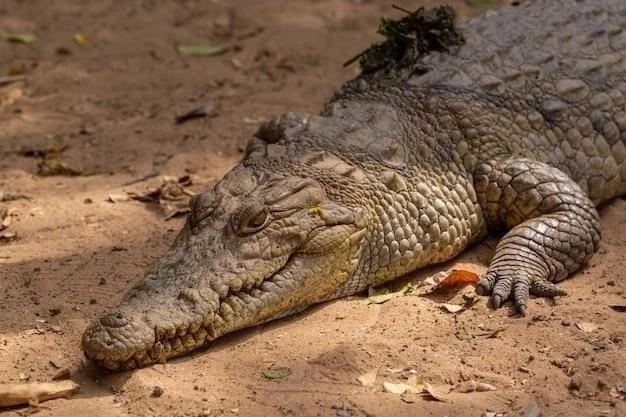
Habitat Degradation and Loss
The gharial’s (Gavialis gangeticus) precarious existence is intricately linked to the health and integrity of riverine ecosystems, which are facing unprecedented pressure from human activities. Habitat degradation and loss stand as primary drivers of the gharial’s decline, jeopardizing their ability to survive and reproduce.
Dams and barrages, while crucial for water management and energy production, have dramatically altered the natural flow regimes of rivers throughout the gharial’s range. These structures disrupt the seasonal flooding patterns that maintain habitat diversity and connectivity, fragmenting populations and isolating breeding groups. The altered flow regimes can also lead to changes in water temperature, sediment deposition, and prey availability, negatively impacting the gharial’s life cycle.
Sand mining, driven by the insatiable demand for construction materials, poses a severe threat to gharial nesting habitats. Females meticulously select sandbanks with specific characteristics—soft sand, adequate solar exposure, and proximity to water—to excavate their nests and incubate their eggs. Extensive sand extraction degrades and destroys these vital nesting grounds, leaving gharials with limited options for successful reproduction.
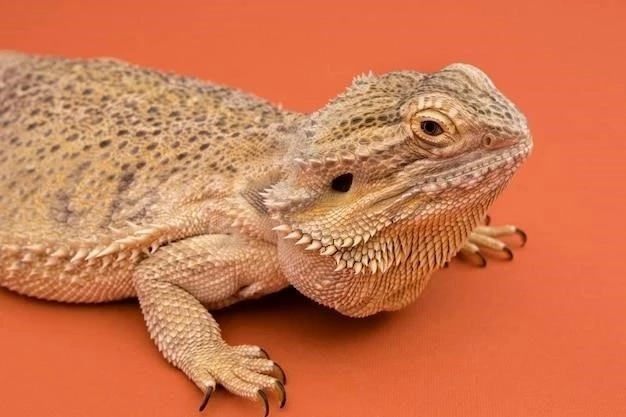
Pollution from industrial effluents, agricultural runoff, and untreated sewage further degrades water quality within gharial habitats. These contaminants can bioaccumulate in the food chain, posing risks to gharial health and reproductive success. Moreover, increased siltation and turbidity resulting from deforestation and poor land management practices reduce water clarity, affecting the gharial’s ability to hunt efficiently.
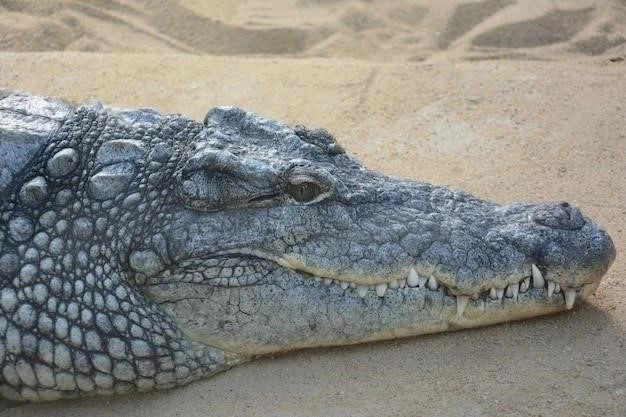
Fishing Practices and Bycatch
The gharial’s (Gavialis gangeticus) specialized piscivorous diet, while an evolutionary marvel, makes it exceptionally vulnerable to the impacts of unsustainable fishing practices. Overfishing and destructive fishing methods not only deplete the gharial’s primary food source but also pose direct threats to their survival through incidental capture, known as bycatch.
Gillnets, widely employed in riverine fisheries for their efficiency in catching fish, represent a significant hazard to gharials. These vertically suspended nets, often spanning considerable lengths and depths, act as indiscriminate traps for aquatic animals. Gharials, in their pursuit of prey, can become entangled in gillnets, leading to drowning if not detected and released quickly by fishers.
The use of dynamite fishing, though illegal in many regions, persists as a ruthless and unsustainable practice with dire consequences for gharials and riverine ecosystems. This method involves detonating explosives underwater, killing or stunning fish for easy collection. However, the shockwaves from the explosions can cause severe injuries or death to gharials in the vicinity, even if not directly targeted.
Beyond bycatch, overfishing exerts immense pressure on gharial populations by reducing the availability of their primary food source. As fish stocks decline due to unsustainable harvesting, gharials face increased competition for resources, leading to nutritional stress, reduced reproductive rates, and heightened vulnerability to other threats.

Poaching and Illegal Trade
While habitat loss and degradation pose significant threats to the gharial (Gavialis gangeticus), the specter of poaching and illegal wildlife trade casts a long shadow over their survival. Driven by a demand for gharial body parts, fueled by traditional medicine beliefs and the insatiable appetite of the illegal wildlife market, poaching continues to jeopardize the future of this critically endangered species.
Gharials are targeted for their various body parts, each holding purported value in certain cultures. The ghara, the bulbous growth on the snout of adult males, is wrongly believed to possess aphrodisiac properties in some traditional medicine systems, fueling a demand that drives poaching pressure on this already vulnerable demographic group.
Skins, although less sought after than those of other crocodilian species, are still illegally traded for use in fashion accessories, further incentivizing poaching. Additionally, gharial eggs are collected for consumption, driven by a combination of subsistence needs and the belief in their supposed medicinal properties, impacting recruitment rates and hindering population recovery.
The illegal wildlife trade operates through complex networks, often transcending national borders, making enforcement and prosecution challenging. Poverty, lack of alternative livelihoods, and weak law enforcement capacity in range countries exacerbate the problem, making it difficult to curb poaching pressure effectively. Combating poaching and dismantling illegal wildlife trade networks are paramount to safeguarding the remaining gharial populations.

Pollution and Water Contamination
The gharial’s (Gavialis gangeticus) freshwater habitat, once a bastion of life, is increasingly imperiled by pollution and water contamination, jeopardizing the delicate balance of these vital ecosystems and threatening the survival of this critically endangered crocodilian. As human populations expand and industrial and agricultural activities intensify, the rivers that gharials depend upon are becoming repositories for a cocktail of contaminants, with dire consequences for aquatic life.
Industrial effluents, often laden with heavy metals, pesticides, and other toxic chemicals, discharge directly into rivers, contaminating water sources and accumulating in the food chain. These toxins pose severe risks to gharials, both through direct exposure and through the ingestion of contaminated prey. Heavy metals, known to biomagnify as they move up the trophic levels, can impair organ function, compromise immune systems, and disrupt reproductive processes in gharials.
Agricultural runoff, carrying fertilizers, pesticides, and animal waste, further exacerbates water pollution. Excess nutrients from fertilizers trigger algal blooms, depleting oxygen levels in the water and creating “dead zones” where aquatic life cannot survive. Pesticides, often highly toxic to aquatic organisms, can directly poison gharials or accumulate in their tissues, leading to long-term health impacts.
Untreated sewage, a growing concern in many parts of the gharial’s range, introduces pathogens and organic pollutants into rivers. These pollutants can lead to outbreaks of diseases in gharial populations, further compromising their already vulnerable status.
Conservation Efforts
Recognizing the gharial’s (Gavialis gangeticus) perilous slide toward extinction, a multi-pronged conservation approach, spearheaded by government agencies, NGOs, and local communities, has been deployed to safeguard this critically endangered crocodilian. These efforts, spanning across legislative protection, habitat restoration, and community engagement, are crucial for securing a future for the gharial in its remaining strongholds.
Legal protection has been paramount in the fight to save the gharial. India and Nepal, the two countries where viable populations persist, have granted the gharial the highest level of legal protection, prohibiting hunting, trade, and habitat destruction within designated protected areas. These legislative measures, while crucial, face challenges in terms of enforcement capacity and the pervasive reach of illegal wildlife trade networks.
Captive breeding and reintroduction programs have emerged as key conservation tools to supplement dwindling wild populations. Specialized crocodile breeding centers have been established, where gharials are bred in controlled environments, and their offspring, reared to a suitable size, are released into carefully selected rivers within their historical range. These programs aim to bolster existing populations, establish new ones, and enhance genetic diversity within fragmented groups.
Habitat restoration and management are central to the long-term survival of gharials. Efforts focus on restoring degraded habitats within and outside protected areas, including removing invasive species, revegetating riverbanks, and implementing sustainable sand mining practices. Maintaining ecological flow regimes through appropriate water management strategies is crucial to ensure the availability of suitable nesting, basking, and foraging grounds for gharials.
Legal Protection and Sanctuaries
Recognizing the gharial’s (Gavialis gangeticus) precarious status, governments across its range have enacted stringent legal measures to curb the threats driving its decline. India, home to the majority of the remaining gharial population, granted the species full legal protection in 1972 under Schedule I of the Wildlife (Protection) Act, affording it the highest level of conservation priority. This legislation prohibits the hunting, killing, capturing, or trading of gharials or their body parts, with severe penalties for violations.
Nepal, harboring a small but significant gharial population, followed suit, extending legal protection to the species under the National Parks and Wildlife Conservation Act of 1973. This legislation established protected areas specifically designated for the conservation of gharials and other threatened species, providing a safe haven for their recovery.
A network of sanctuaries and national parks has been established across India and Nepal, serving as critical refuges for gharials and their riverine habitats. The Chambal River Sanctuary, spanning the states of Uttar Pradesh, Madhya Pradesh, and Rajasthan in India, stands as a shining example of successful gharial conservation. This sanctuary, established in 1979, encompasses a 400-kilometer stretch of the Chambal River, providing prime habitat for a significant portion of the global gharial population.
Other notable protected areas for gharials in India include the National Chambal Sanctuary, Katarniaghat Wildlife Sanctuary, and Corbett National Park. In Nepal, the Chitwan National Park and Bardia National Park harbor vital gharial populations. These protected areas provide crucial safe havens for gharials, offering protection from poaching, habitat degradation, and other threats.
Captive Breeding and Reintroduction Programs
Captive breeding and reintroduction programs have emerged as cornerstones of gharial (Gavialis gangeticus) conservation, providing a critical lifeline for this critically endangered species teetering on the brink. Recognizing the limitations of in-situ conservation alone in the face of ongoing threats, these ex-situ initiatives aim to bolster dwindling wild populations, establish new ones in suitable habitats, and enhance genetic diversity within fragmented groups.
Pioneered in the 1970s, gharial captive breeding programs involve collecting eggs from the wild or breeding individuals in controlled environments at specialized crocodile breeding centers. These centers provide optimal conditions for breeding, incubation, and hatchling care, maximizing survival rates and ensuring a steady supply of individuals for release into the wild.
Prior to release, captive-bred gharials undergo a crucial “head-starting” phase, during which they are reared in semi-natural enclosures that mimic wild conditions. This process allows them to develop essential survival skills, such as hunting live prey, navigating river currents, and avoiding potential predators, increasing their chances of acclimatizing to the challenges of life in the wild.
The selection of reintroduction sites is paramount to the success of these programs. Rigorous assessments are conducted to identify river stretches that meet the gharial’s specific ecological requirements, including suitable water quality, prey availability, nesting habitat, and minimal human disturbance.
Community-Based Conservation Initiatives
Recognizing that the long-term survival of the gharial (Gavialis gangeticus) hinges on the support and active participation of communities residing alongside its riverine habitats, community-based conservation initiatives have emerged as essential components of gharial recovery efforts. These initiatives seek to empower local communities to become stewards of their natural heritage, fostering a sense of ownership and responsibility for the conservation of this iconic species.
Engaging local communities in gharial conservation requires a multi-faceted approach that addresses both ecological and socioeconomic factors. Awareness campaigns and educational programs play a pivotal role in dispelling myths and misconceptions surrounding gharials, often perceived as dangerous man-eaters. By highlighting their ecological importance and promoting coexistence strategies, these initiatives foster tolerance and understanding, paving the way for conservation-minded behavior.
Alternative livelihood programs provide tangible economic incentives for communities to engage in conservation practices. By promoting sustainable fishing practices, ecotourism ventures, and alternative income-generating activities that reduce reliance on unsustainable resource extraction, these initiatives create win-win situations for both people and gharials.
Empowering local communities to participate in monitoring and patrolling efforts has proven highly effective in deterring poaching and illegal fishing activities. By equipping community members with the necessary training and resources, these initiatives enhance surveillance capacity, providing a crucial line of defense against threats to gharials and their habitats.
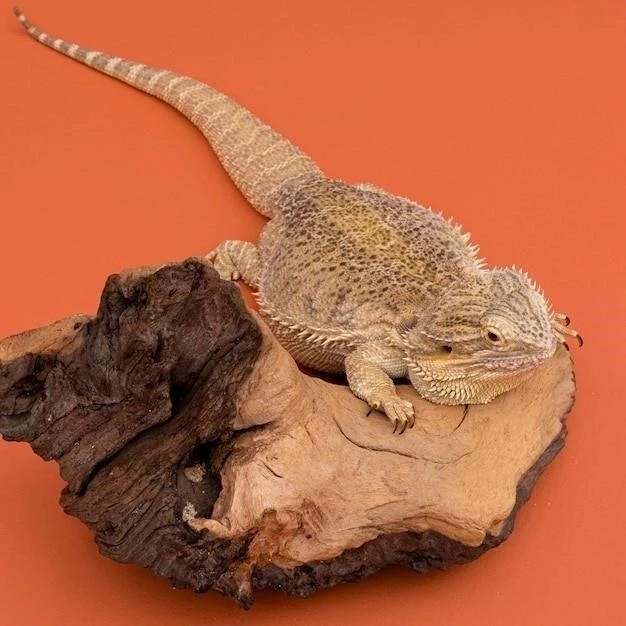
Challenges to Conservation
Despite commendable strides in gharial (Gavialis gangeticus) conservation, formidable challenges persist, underscoring the complexity of safeguarding this critically endangered species against a backdrop of mounting anthropogenic pressures. Navigating these challenges requires a nuanced understanding of the intricate interplay between ecological, socioeconomic, and institutional factors that shape the gharial’s fate.
Habitat loss and degradation, driven by expanding human populations, agricultural intensification, and infrastructure development, remain paramount threats to gharial populations. Protecting and restoring the integrity of riverine ecosystems, crucial for the gharial’s survival, requires a paradigm shift towards integrated water resource management that balances human needs with ecological imperatives.
Enforcement of existing wildlife protection laws faces significant challenges in many parts of the gharial’s range. Limited resources, inadequate infrastructure, and a lack of political will often hinder effective patrolling, prosecution of wildlife crimes, and dismantling of illegal wildlife trade networks. Strengthening law enforcement capacity through increased funding, training, and inter-agency collaboration is crucial for deterring poaching and illegal trade.
Engaging local communities in conservation efforts is paramount, but bridging the gap between conservation goals and socioeconomic realities remains a challenge. Poverty, limited access to alternative livelihoods, and a lack of awareness about the importance of conservation can undermine even the most well-intentioned initiatives. Addressing these underlying socioeconomic factors through sustainable development programs is essential for fostering community ownership and long-term conservation success.










